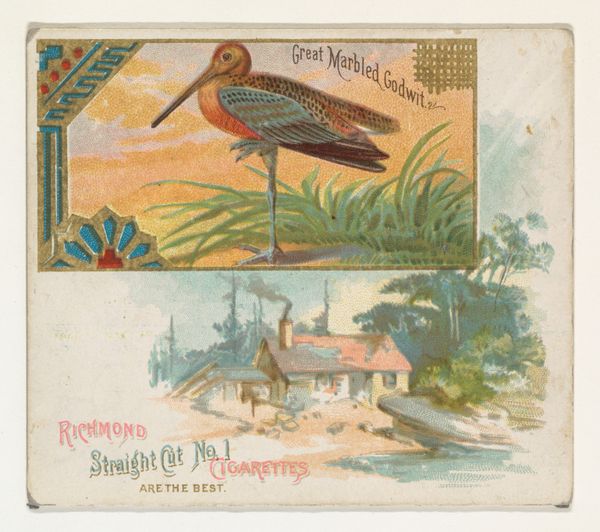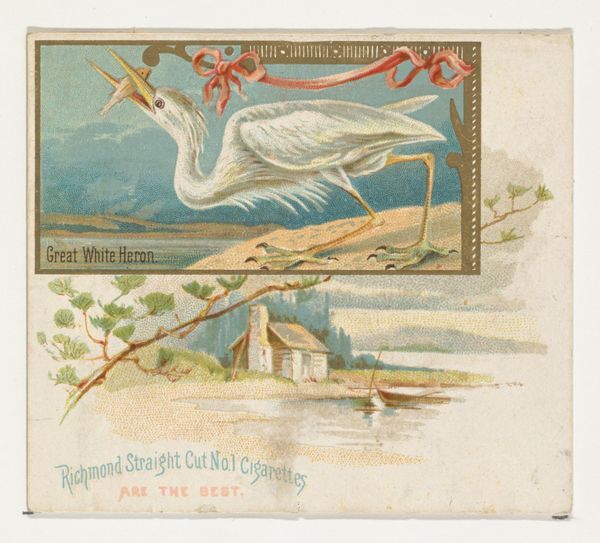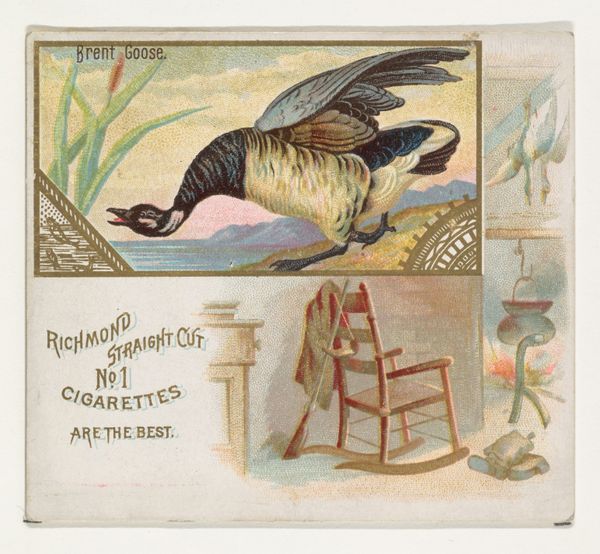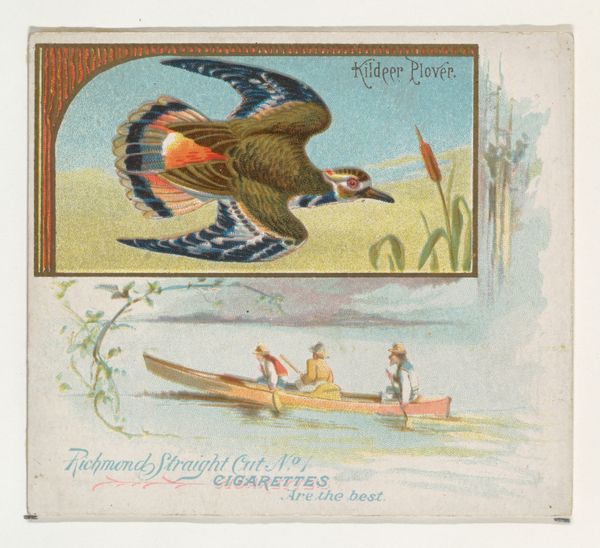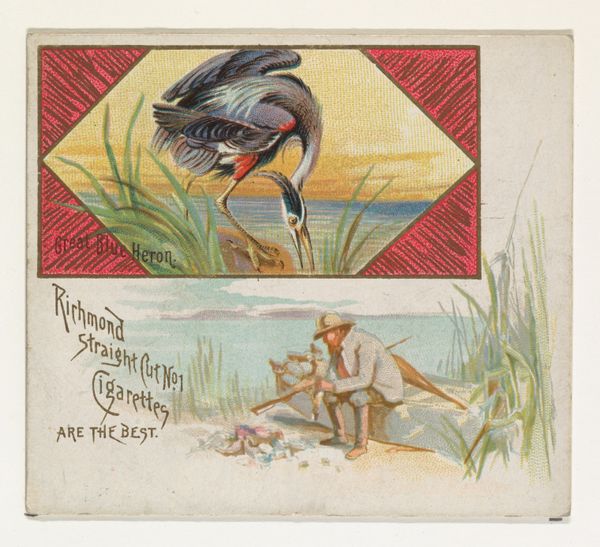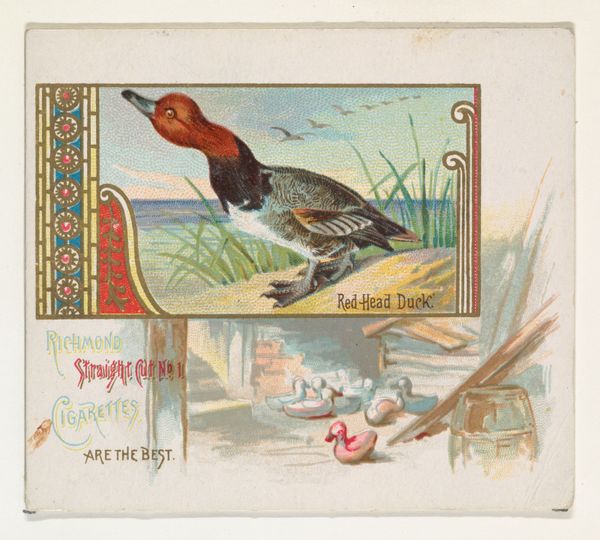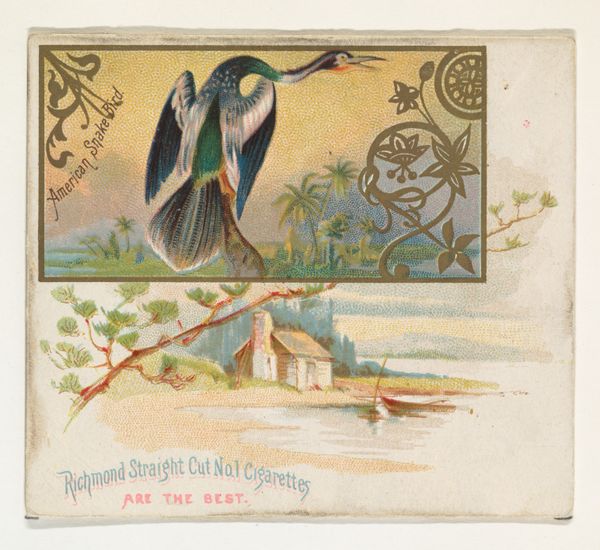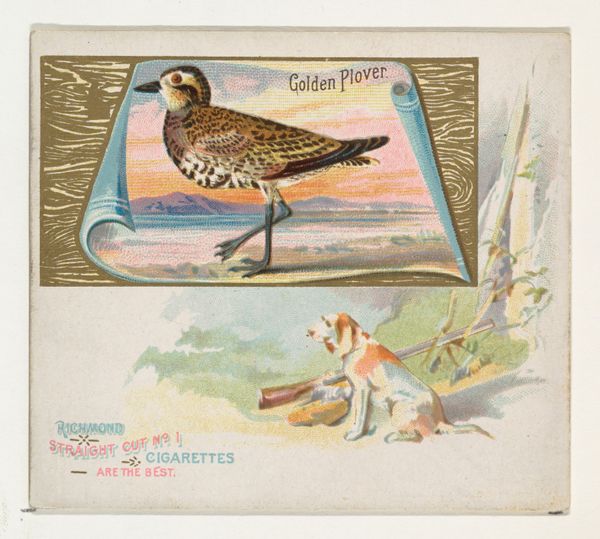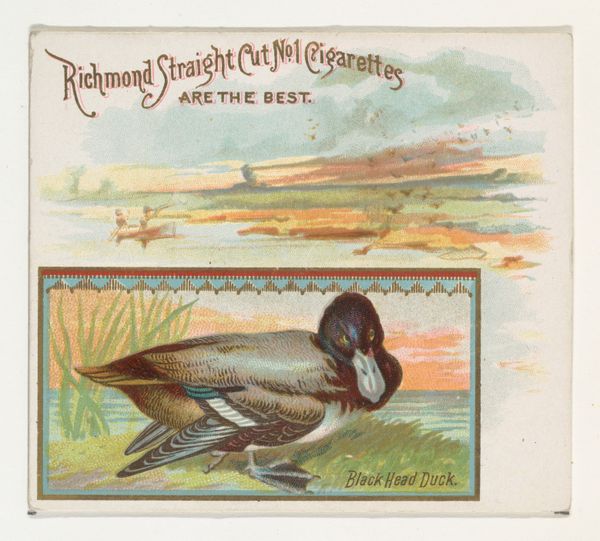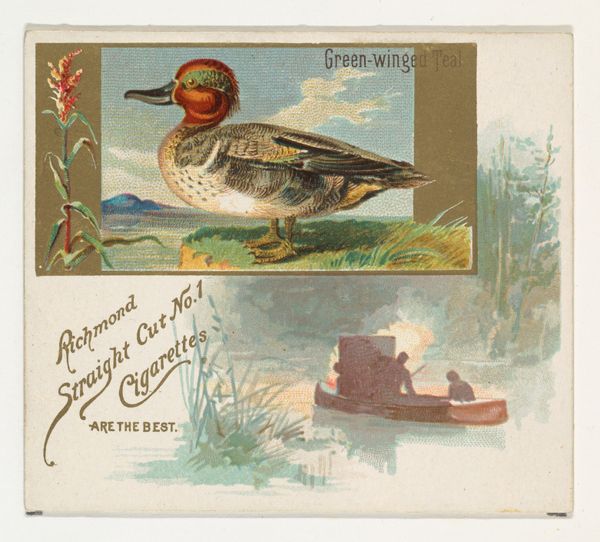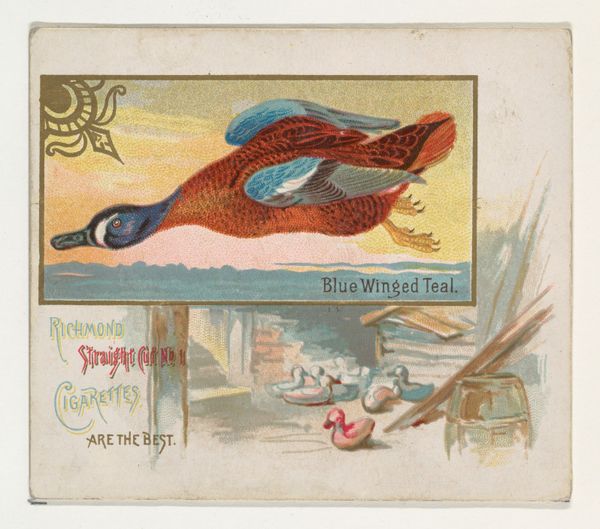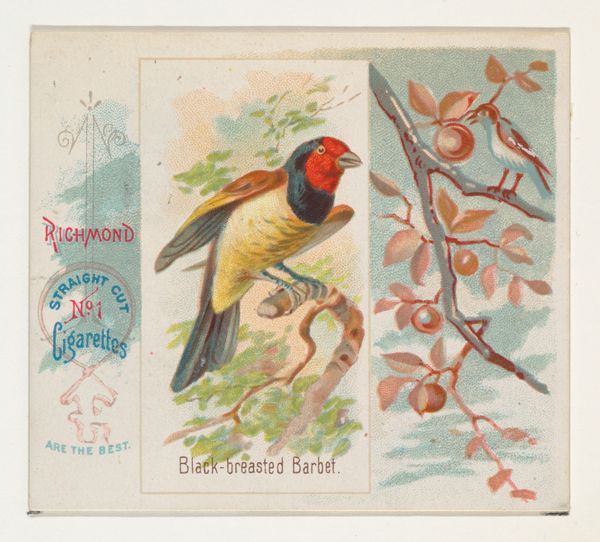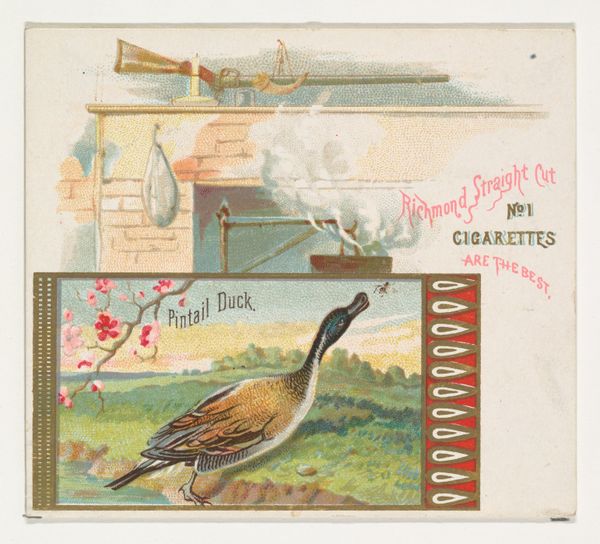
Canvas-Back Duck, from the Game Birds series (N40) for Allen & Ginter Cigarettes 1888 - 1890
0:00
0:00
drawing, coloured-pencil, print, watercolor
#
drawing
#
coloured-pencil
# print
#
impressionism
#
watercolor
#
coloured pencil
#
genre-painting
#
watercolor
Dimensions: Sheet: 2 7/8 x 3 1/4 in. (7.3 x 8.3 cm)
Copyright: Public Domain
Curator: Here we have "Canvas-Back Duck, from the Game Birds series (N40) for Allen & Ginter Cigarettes," a chromolithograph card dating from around 1888 to 1890. Editor: The palette is muted, almost smoky. I find it quite melancholic, this scene—a solitary duck above, the accoutrements of a hunt below. It speaks of leisure and of course, extraction. Curator: Indeed. These cards, vibrant at the time, were included in cigarette packs, and they depict game birds but also reference consumer culture. How does that consumption connect to late 19th century identity? Editor: Think about the materials here. This wasn't just an image; it was a commodity nestled within another. The paper itself speaks volumes about the industry supporting this vision of leisure, one that hinged on the exploitation of natural resources and labor. Curator: Right, this imagery becomes crucial to understand the broader imperialist project. Hunting as sport and cigarettes, as forms of commerce and pleasure. It really represents a gendered, racialized privilege back then. Editor: Exactly. And consider how mass production techniques affect image dissemination and influence taste. This unassuming little card promoted certain lifestyles and normalised particular ways of engaging with nature and social roles. It normalizes the act of possessing both the duck in the image and the implied wealth necessary to engage in such hunts. Curator: The imagery seems to naturalise existing power structures, obscuring their violent foundations, don’t you agree? Editor: Absolutely, it’s visual rhetoric embedded in a mass-produced collectible. Its material existence acted within power systems; it helped disseminate and perpetuate ideas. Curator: A glimpse into intertwined threads of consumption, exploitation, and representation woven into everyday life back then, prompting us to question such historical processes of mass production. Editor: Well, it definitely urges us to analyze the ways that consumer products actively shape societal attitudes concerning class, nature, and labour. Thank you for sharing your unique point of view on this piece.
Comments
No comments
Be the first to comment and join the conversation on the ultimate creative platform.
